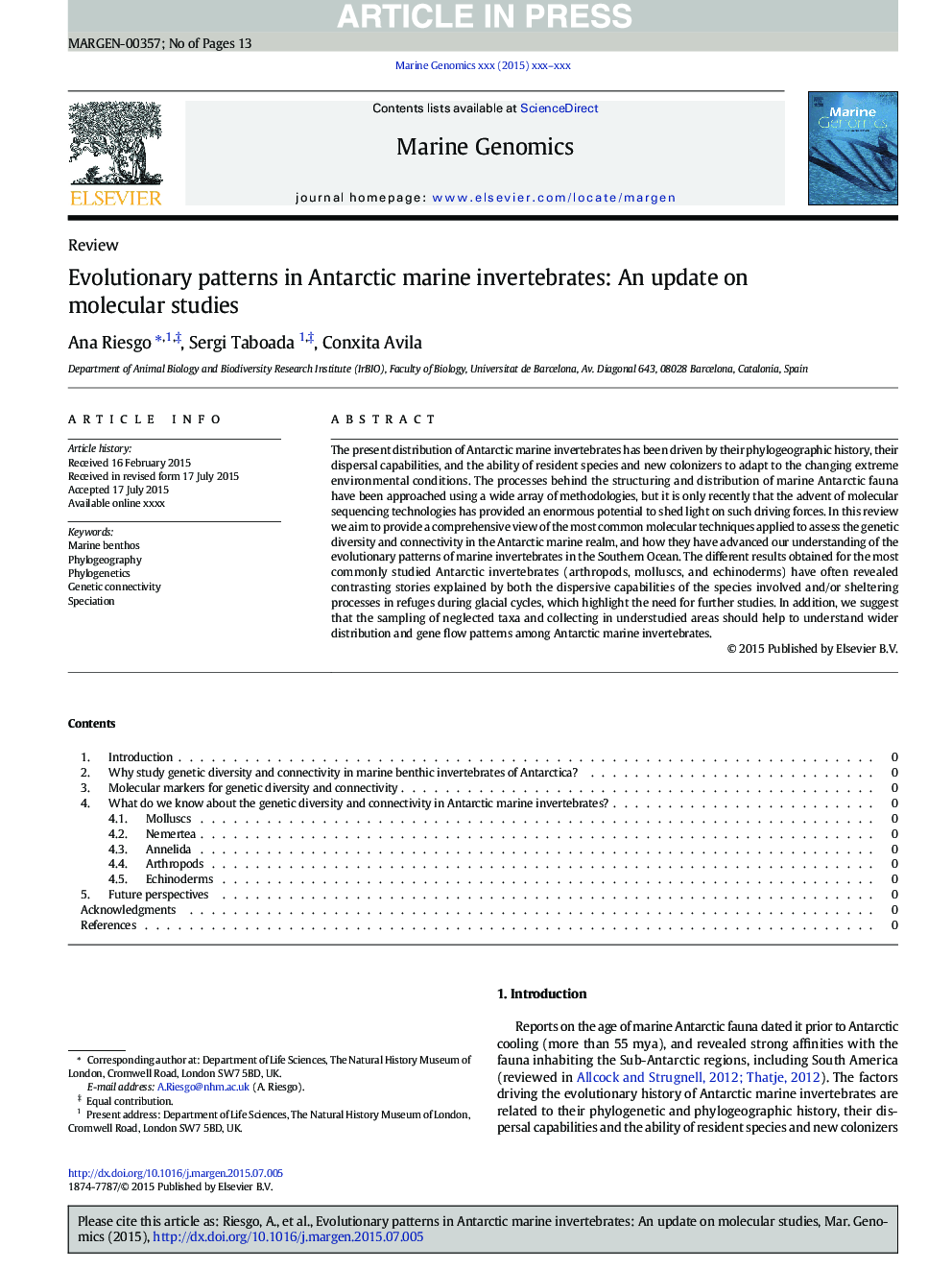| Article ID | Journal | Published Year | Pages | File Type |
|---|---|---|---|---|
| 8388307 | Marine Genomics | 2015 | 13 Pages |
Abstract
The present distribution of Antarctic marine invertebrates has been driven by their phylogeographic history, their dispersal capabilities, and the ability of resident species and new colonizers to adapt to the changing extreme environmental conditions. The processes behind the structuring and distribution of marine Antarctic fauna have been approached using a wide array of methodologies, but it is only recently that the advent of molecular sequencing technologies has provided an enormous potential to shed light on such driving forces. In this review we aim to provide a comprehensive view of the most common molecular techniques applied to assess the genetic diversity and connectivity in the Antarctic marine realm, and how they have advanced our understanding of the evolutionary patterns of marine invertebrates in the Southern Ocean. The different results obtained for the most commonly studied Antarctic invertebrates (arthropods, molluscs, and echinoderms) have often revealed contrasting stories explained by both the dispersive capabilities of the species involved and/or sheltering processes in refuges during glacial cycles, which highlight the need for further studies. In addition, we suggest that the sampling of neglected taxa and collecting in understudied areas should help to understand wider distribution and gene flow patterns among Antarctic marine invertebrates.
Related Topics
Physical Sciences and Engineering
Earth and Planetary Sciences
Earth and Planetary Sciences (General)
Authors
Ana Riesgo, Sergi Taboada, Conxita Avila,
